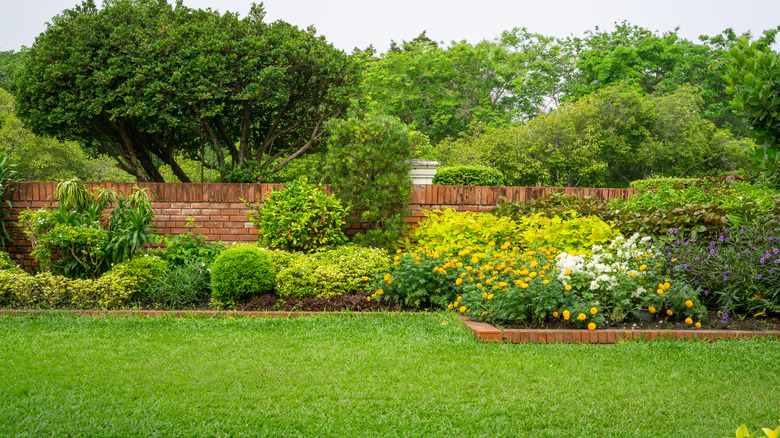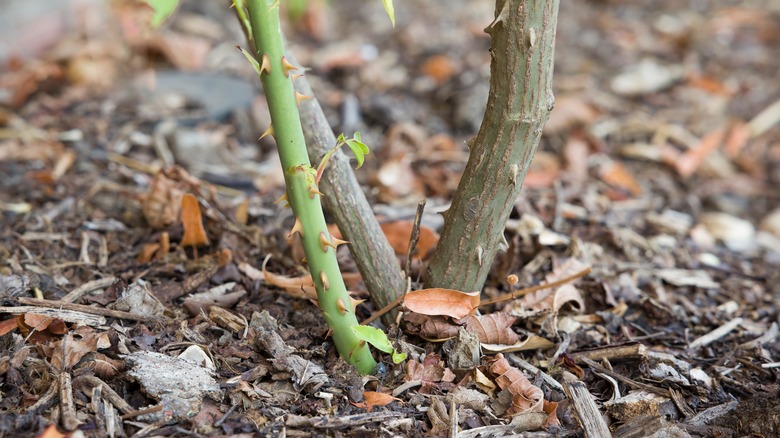The Easiest Way To Fertilize Your Yard's Shrubs And Bushes
Fertilizing your yard's shrubs and bushes is crucial for maintaining their health and promoting robust growth. Fertilizers are a source of essential nutrients that make plants more resilient and significantly enhance their appearance, giving them a vibrant color and encouraging healthy growth. Even though the soil provides some nutrients, it may not always supply them in the necessary amounts. Fertilizing dense shrubs and bushes can be tricky since their root systems typically lie near the surface, with the most absorbent roots located in the top layers of the soil. Consequently, surface-applied fertilizer might not effectively reach these roots, potentially leading to suboptimal nutrient absorption. However, there is an easy way to make sure your fertilizer gets to these plants.
To fertilize dense shrubs or bushes effectively, getting the fertilizer right to the plant's base is essential. You can utilize a 2-inch PVC pipe for effective fertilization. Place one end of the pipe close to the plant's base and channel the fertilizer down through it. Cut the pipe's top at a 45-degree angle for easier pouring, creating a wider opening for the fertilizer.
Why fertilizing at a plant's base works well
Fertilizing directly at a plant's base is effective because it channels nutrients straight to the roots, where they are most essential. A common practice for individual plants, such as shrubs and perennials, involves applying fertilizer around the plant's base and extending outward. This method ensures that the vital nutrients are readily available in the root zone for absorption. For trees and shrubs, it's crucial to distribute the fertilizer throughout the entire root zone.
When dealing with a cluster of shrubs in a bed or natural area, measuring the entire area is practical to gauge the appropriate amount of fertilizer. Remember to account for the extended roots stretching beyond the outermost shrubs' branches. However, it's important to avoid over-fertilizing, as this can harm the roots. Choosing the correct type of fertilizer, leaning toward slow-release varieties, and diligently following label instructions are also important. Typically, it's advisable not to exceed 2-3 pounds of nitrogen per 1,000 sq. ft. For optimal results, always water the area before and after fertilizer application. This not only ensures the nutrients are absorbed effectively but also prevents them from merely scattering on the surface. Proper irrigation is vital to ensure plants thoroughly benefit from the nutrients.

